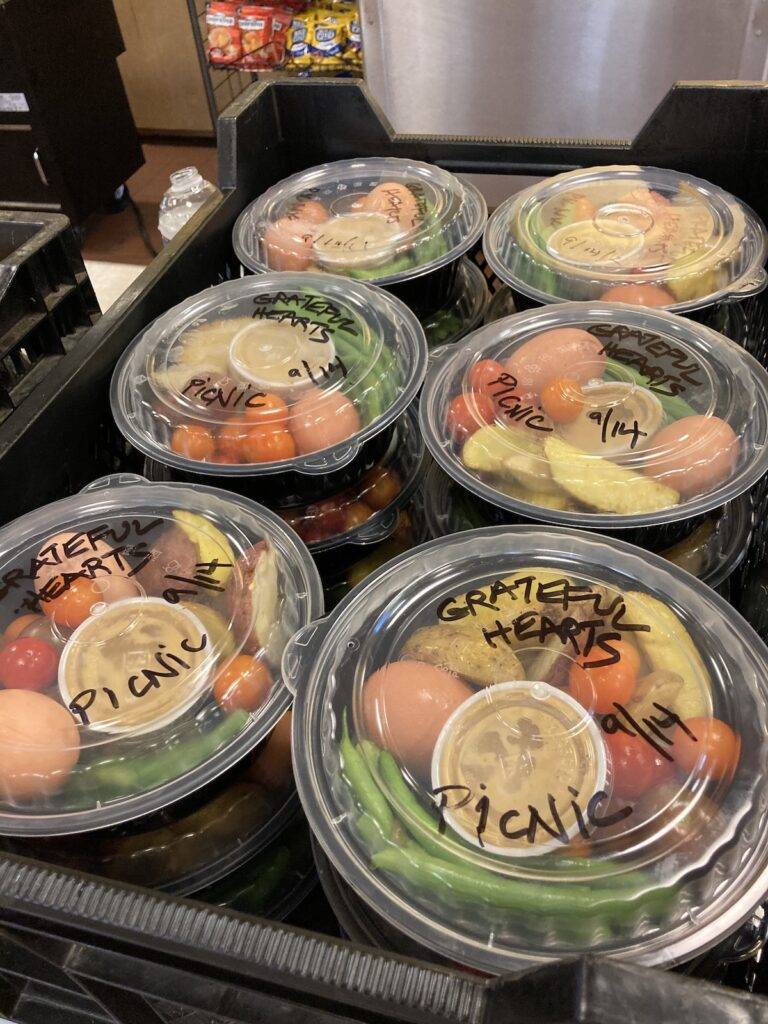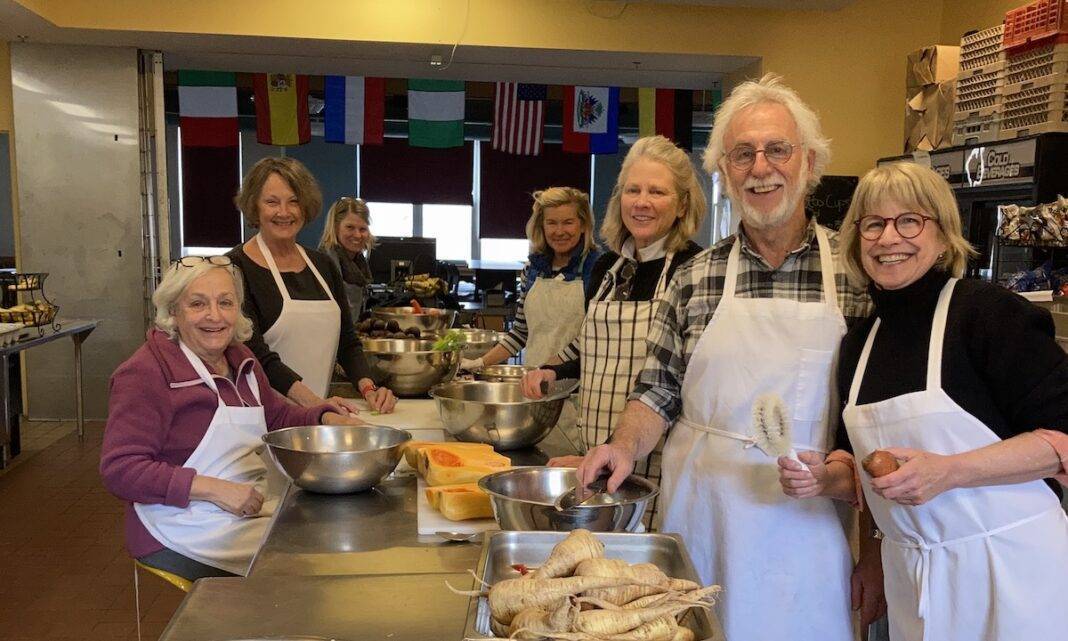An ambitious (and replicable) program in Vermont turns surplus food into delicious meals for the hungry, ensuring that nothing goes to waste
Ready for some sobering stats? Followed by an inspiring solution?
According to the EPA, Americans discard more food than any other country on the planet, calculated at 30-40% of our entire food supply, or 219 pounds per person. The average family of four tosses out $1,600 of fresh produce each year. Food takes up more space in our landfills than any other component, generating methane emissions. The kicker? Most of that discarded food is perfectly edible.
With food insecurity on the rise, why do Americans continue to waste so much food?
That question inspired Dale Coppin of Manchester, Vermont to establish Grateful Hearts in 2011. Our nonprofit’s mission (I’m on the board of directors and a volunteer) is three-fold: create nutrient-dense meals made from local produce; partner with area farms and producers to reduce food waste; nurture community through feeding others. The meals are distributed to more than 25 organizations that serve the food-insecure throughout southwestern Vermont. Who does this work? Approximately 50 volunteers spread across four teams: chop & chat, gleaning, packaging, and distribution.
Grateful Hearts’ mission is three-fold: create nutrient-dense meals made from local produce; partner with area farms and producers to reduce food waste; nurture community through feeding others. The meals are distributed to more than 25 organizations that serve the food-insecure throughout southwestern Vermont.
The Grateful Hearts miracle begins with the generosity of more than a dozen area farmers who contributed nearly 7,000 pounds (that’s 3 ½ tons!) of vegetables, eggs, bread, and dairy in 2021. Our chop & chat team works with approximately 250 to 300 pounds of fresh produce each week, including the depths of winter. In late summer, that volume doubles.
In 2017, we prepared approximately 15,000 meals, incorporating 2,928 pounds of food that might otherwise have gone to waste, captured by our gleaning team. In 2021, we generated more than 40,000 meals made from 6,682 pounds of product. What accounts for this dramatic increase? A series of creative partnerships that have allowed Grateful Hearts to expand our vision and ramp up the scale of production.
Our fledgling program began in a VFW kitchen then moved across town to a larger church facility. As the pandemic took hold in March 2020, we closed down production at the church and, three months later, resumed operations in our new home: the spacious commercial kitchen at Burr & Burton Academy, the local high school. Our chop & chat crew quickly embraced the new-to-us equipment (including double-decker convection ovens, steamers, a 25-gallon soup kettle, and a five-foot flat-top grill!) and developed streamlined systems and efficiencies during our three-hour sessions on Monday and Tuesday afternoons. The packaging team portions and freezes the meals on Wednesday evening in preparation for distribution on Friday.
In 2021, we also established an inspiring collaboration with the farm and gardens at Hildene, the Lincoln Family estate, where we now grow fresh veggies and herbs that supplement what we bring in from our other farm partners. Additionally, Hildene provides a walk-in cooler and chest freezer to store our bounty.

Grateful Hearts’ evolution has been sustained by the generous contributions of local friends who believe in our mission. As one supporter wrote, “We are happy to contribute our treasure to those who have the talent to put it to good use.” Funds raised help us purchase the supplies that don’t grow locally: pantry staples, cooking oils, spices, and the requisite packaging materials. We are in our third year of contracting with several area farmers to grow and store winter crops that form the backbone of our cold-weather cooking. It just feels right to offer these contracts to the farmers who so freely gift us their surplus in the warmer months.
Miracles happen when people collaborate to solve problems. The Grateful Hearts model can be replicated in almost any community. All you need is a commercial kitchen, farm partners, and a crew of dedicated volunteers. A grateful heart will naturally ensue.


